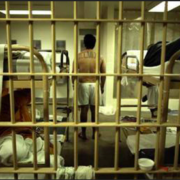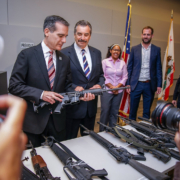Trump, his alleged co-conspirators, and our fascination with Mugshots
Over the past few weeks many people and entities seemed to obsess over the release of former president Donald Trump’s mugshot in connection with his indictment and forthcoming arrest, in connection with charges that the engaged in election fraud, by the Fulton County District Attorney’s (DA) office.
The focus on the highly anticipated mugshot, unleashed a tsunami of mostly creative, largely visual, and sometimes humorous and at other times unflattering photoshopped and manipulated images of the defendants who were about to surrender, those who got booked, and projections of what Trump’s image might or should look like when his mugshot is taken.
It’s not clear exactly why mugshots, photos that capture people at their worst moment, have become important cultural markers in our society. And it’s not just Trump’s mugshot, nor those of his alleged co-conspirators that capture the public’s attention.
We are fascinated by mugshots of all manner of celebrities, including musicians (e.g., Frank Sinatra, David Bowie, etc.), actors/actresses (e.g., Marilyn Monroe, Johnny Depp, etc.), sports stars (Mike Tyson, Denis Rodman, etc.), politicians (e.g., Rod Blagojevich, etc.), and businessmen (e.g., Bernie Madoff, Bill Gates, etc.).
It’s also not certain where the origins of this fascination derives. I suspect that it’s anchored in the schadenfreude phenomenon (basically the pleasure experienced when witnessing someone else’s misfortune). And it’s not everyone’s mugshot that we care about.
We are titillated with watching the rich, the famous, the boisterous, and the obnoxious amongst us get arrested, finger printed, photographed, and if need be convicted.
It’s also because we like to see a person of high stature, particularly one who is not well liked, be taken down a peg or two, a phenomenon often referred to as celebrity downfall.
For some of us, I suspect, the mugshot, and Trump’s in particular, gave us some sort of closure on the long running saga on whether or not he would be indicted, and ultimately arrested by Fani Williams, the Fulton County DA.
In other words, it’s cathartic and reassuring to witness and know that even in America people are at some level held accountable for their actions, and that the criminal justice system, as imperfect as it is, works for everyone and not just for the powerless.
The mugshot, and the activities surrounding this step in the processing of alleged suspects in a criminal case, is also part of the collective voyeurism, that we as Americans freely take part in.
We do this when we follow the highly curated social media feeds of our friends, acquaintances, relatives, and heroes, flip through People magazine, or watch television shows like “Lifestyles of the rich and famous.”
Some of this behavior is because are bored, tired and exhausted with our lives, work, partners, friends, etc. Alternatively see this kind of behavior as a result of our collective diagnosed and undiagnosed Attention deficit hyperactivity disorder.
We can probably agree that constantly refreshing our social media feeds in the hours leading up to Trump’s booking, or other similar behaviors, is not a productive or creative use of our time. Channeling our energies away from these kinds of voyeuristic activities and towards things that hold more significance, such as creating meaningful content, volunteering at homeless shelters, or even teaching a child to read, have the potential to offer us and others a much more fulfilling use of our resources.
Although numerous strategies exist to prevent us from going down social media and similar rabbit holes, we need to be more introspective and reflective of what we do, how we do it, and why. By considering the role the voyeuristic activities play in our lives, we might consider alternatives that give both ourselves and others joy, happiness, and meaning. Ultimately, by stepping away from the incessant virtual noise, and recognizing our role in this ecosystem, we be able to create space for genuine growth and impactful contributions. The next and harder part is putting our plans for change into action.


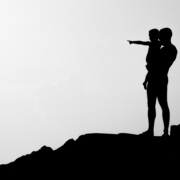


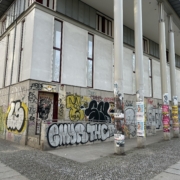
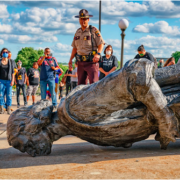 @ Tony Webster
@ Tony Webster